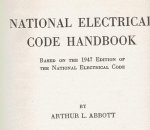I have lost a key (to me) element here. Once the conductors enter the building how far do they travel before reaching the overcurrent device ?
Historically locally the distance allowed has varied depending on the wiring method used (rigid or IMC conduit) and the possibility of physical damage. It is not unheard of here for an AHJ to allow a
drop from ceiling height to a main overcurrent device directly below and on the same floor.
Historically locally the distance allowed has varied depending on the wiring method used (rigid or IMC conduit) and the possibility of physical damage. It is not unheard of here for an AHJ to allow a
drop from ceiling height to a main overcurrent device directly below and on the same floor.


